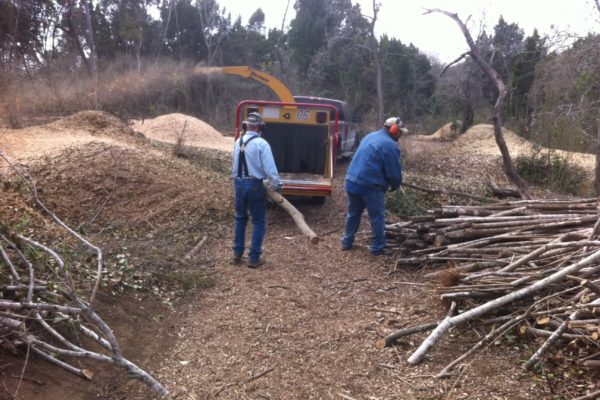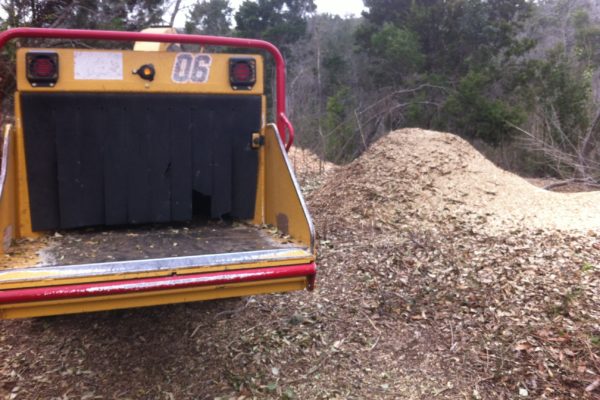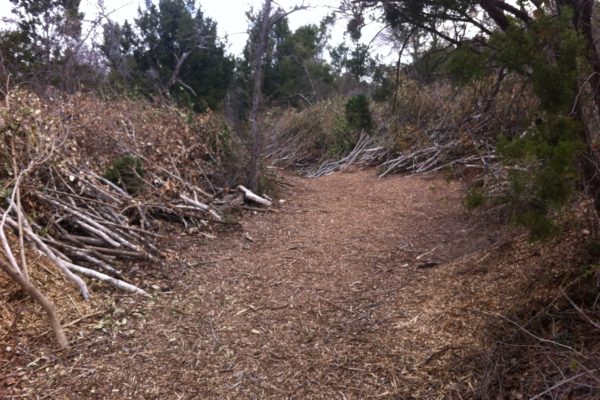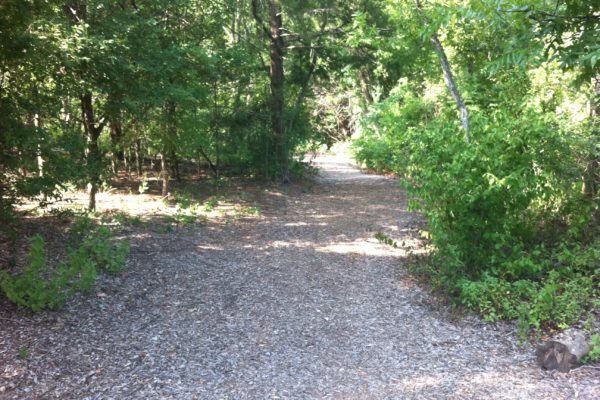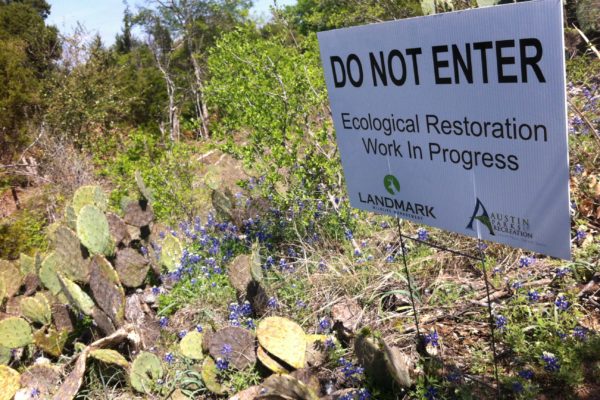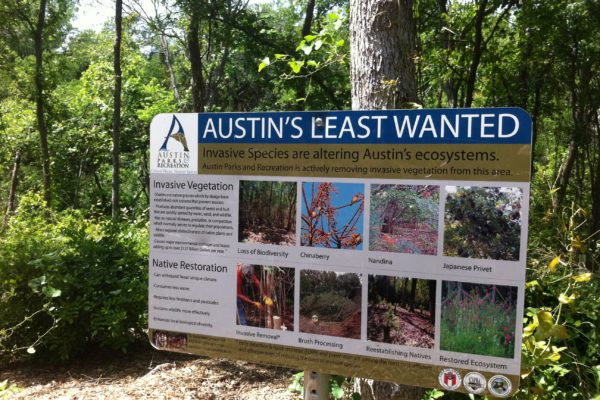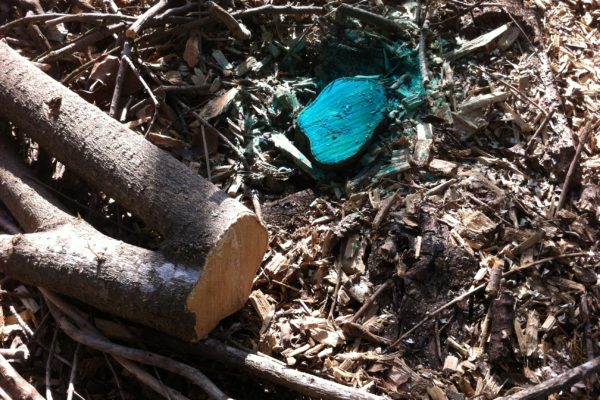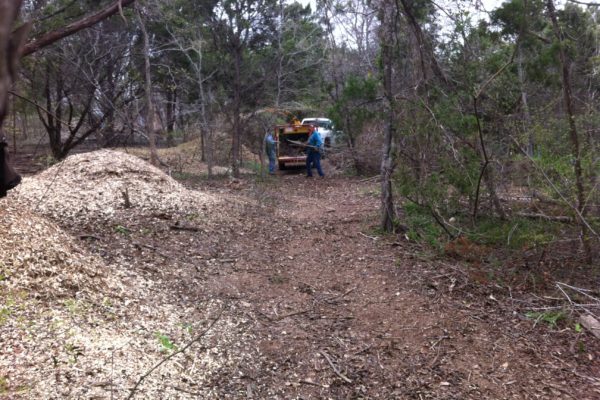PROJECT
Blunn Creek Restoration Project: A Unique Partnership for an Urban Preserve
When we hear “Texas landowner” many of us immediately envision an individual (in cowboy boots, no less), but other entities, like the City of Austin, own land, too. The Blunn Creek Partnership hired Landmark Wildlife Management to help maintain and restore the City of Austin’s Blunn Creek Nature Preserve. Along with city personnel and a determined team of volunteers, Landmark helps keep this forty-acre urban preserve, which sits atop a now extinct volcano and is located a mere stone’s throw from our state’s Capitol building, wild and natural and native.
The Blunn Creek Nature Preserve restoration effort is a unique partnership between the City of Austin’s Parks and Recreation Department, Austin Parks Foundation, Keep Austin Beautiful, South River City Citizens Neighborhood Association, and the Blunn Creek Partnership. The work done through this collaboration to improve the ecological health of the preserve, increase habitat quality for wildlife and watershed value, and enhance plant diversity is both impressive and inspiring. Landmark Wildlife Management brings its wildlife management expertise to the partnership and to tackle those tasks not well-suited for the dedicated volunteers.
Before the restoration project began, much of this land, once covered by volcanic ash from an eruption some 80 million years ago, was covered in invasive exotics; non-native trees made up a staggering 80% of the tree canopy in Blunn Creek Nature Preserve. Ligustrum is the most abundant non-native found on the preserve, with Chinaberry, Chinese privet and nandina also in the mix. These evergreen non-native trees not only displace more important native shrubs and trees, they also shade out grasses and wildflowers which leads to increased erosion. And with no natural diseases or predation to take them down, the only way to eradicate the problem is with partnership teamwork.
“Super-volunteer” Jerry Levenson aka the Ligustrum Liquidator (just see his business card) spends countless hours cutting down all larger non-native trees, leaving behind two to three feet of stump which Landmark then eradicates with chainsaws to cut the trees flush to the ground and then treatment with a meticulously applied aquatic-safe herbicide. Appropriate herbicide application requires both knowledge and an applicator’s license, and Landmark possesses both.
As the formidable Ligustrum Liquidator takes out the big trees, other volunteers pull out smaller trees using a weed wrench. The downed “slash” is then dragged to trails and right-of-ways where they are piled to be converted into mulch by Landmark’s heavy equipment brush chipper.
“When we have Landmark’s crew on site the one sound you won’t hear is the chipper idling,” notes Levenson. “Landmark keeps it fed with brush and they consistently get more work accomplished than I would have thought possible.”
The mulched slash is then redistributed along the trails by volunteers for erosion control, to help the ground hold additional moisture, and return organic matter back into the soil.
“Restoring Blunn Creek Nature Preserve has been a work in progress for a number of years thanks to volunteers and City of Austin personnel,” explains David Todd, who helps with the funding and big picture planning for the Blunn Creek Partnership. “But Landmark’s involvement has helped speed up the process considerably thanks to their skills, equipment, and hard work.”
Landmark Wildlife Management is proud to be part of this unique and hardworking partnership dedicated to restoring and protecting Blunn Creek Nature Preserve. With the continued dedication of tireless volunteers and city staff, combined with Landmark’s professional expertise and skill, this urban preserve, born from a volcano eruption millions of years ago, will be wild and native for many years to come.





